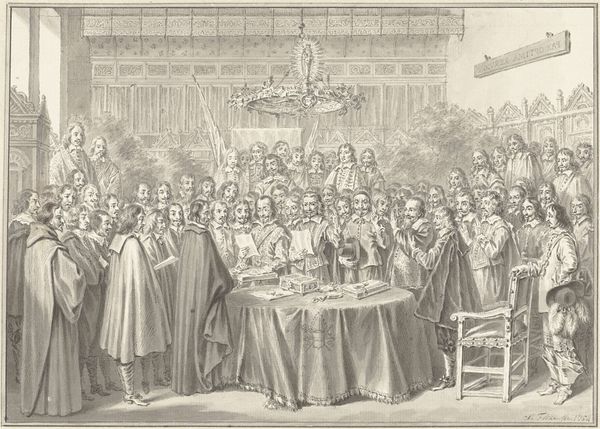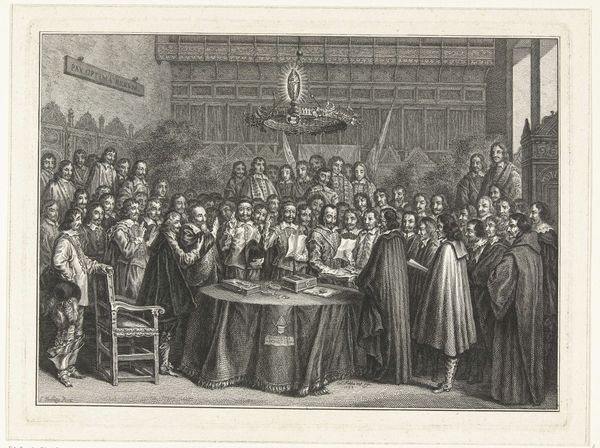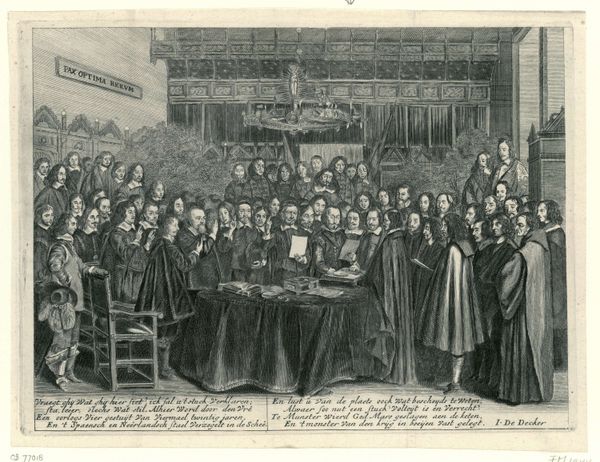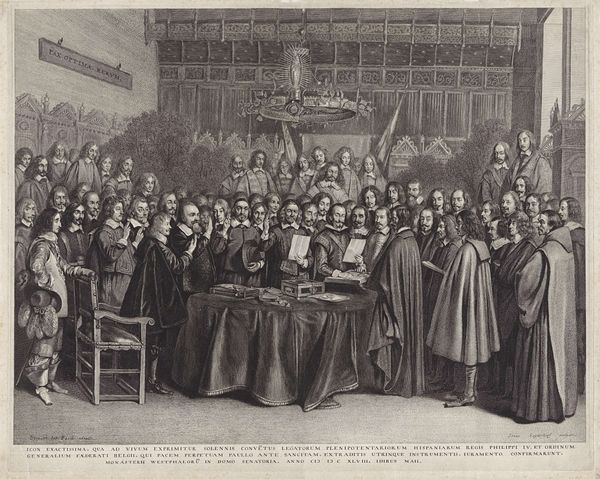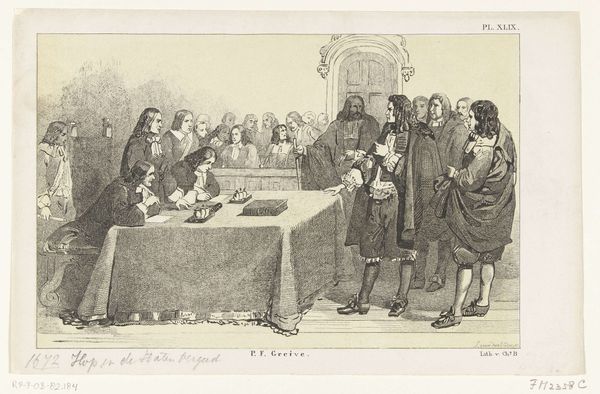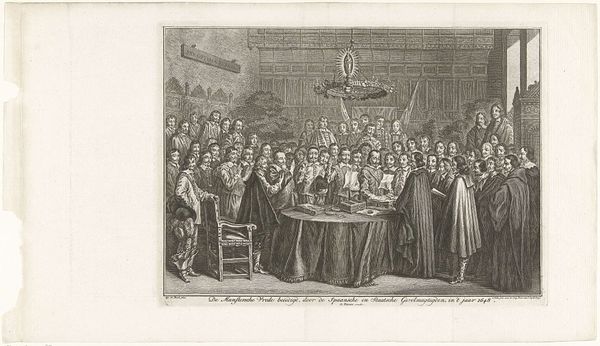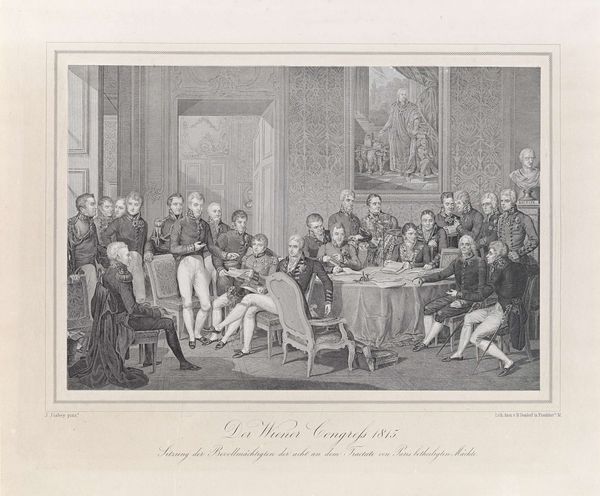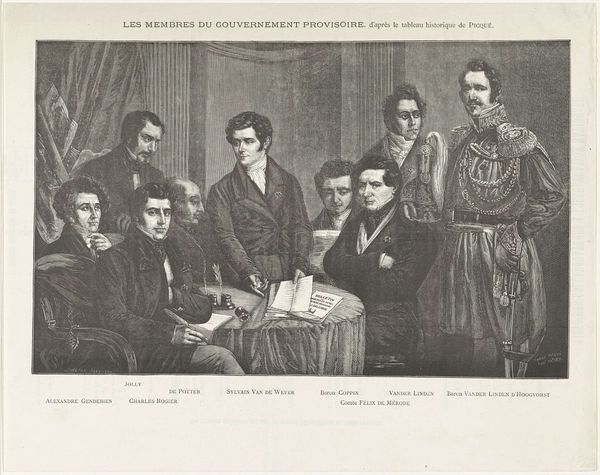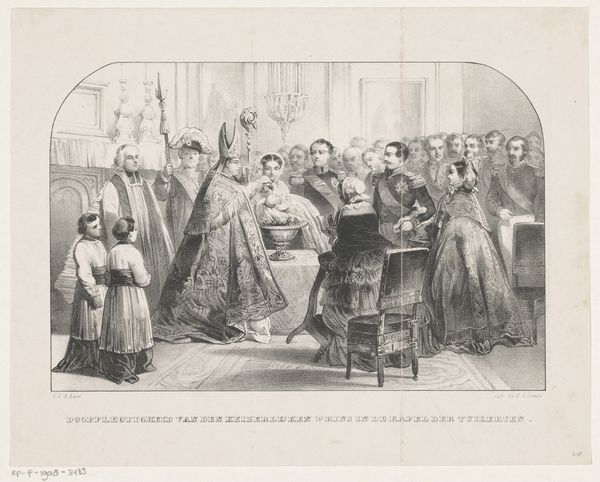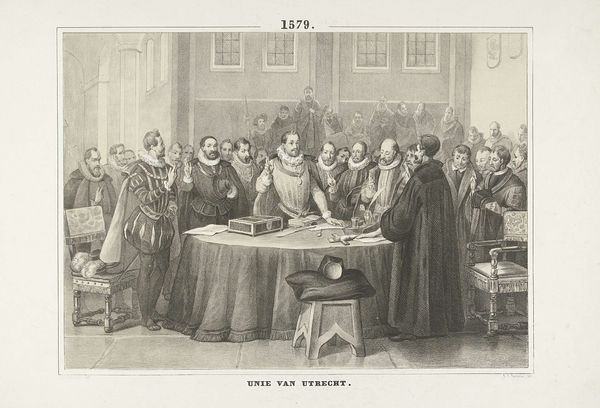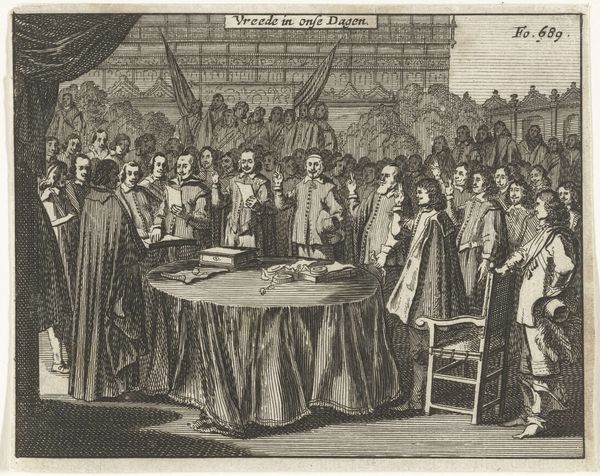
Dimensions: height 160 mm, width 242 mm
Copyright: Rijks Museum: Open Domain
Editor: So, this is Petrus Franciscus Greive's engraving, "The Swearing of the Oath Ratifying the Treaty of Münster, 1648," made between 1853 and 1861. It's striking how much detail is packed into a single print. What are your initial thoughts on the image, and perhaps more importantly, on engraving as a medium for representing this event? Curator: I’m drawn to think about the social context and the very act of creating an engraving like this. Consider the labor involved. Each line, each minute detail, painstakingly etched by hand. What does it mean to depict a treaty, a formal agreement aiming to end conflict, through such a laborious process? Editor: That's a great point, the contrast is definitely there. The treaty meant to reduce laboring under conflict but is captured via detailed and elaborate workmanship. How does that tension inform the image itself? Curator: It makes me question the intent of its production. Was this engraving aimed for mass consumption? If so, to whom? And how does that accessibility through print influence our understanding of this historical event compared to, say, a unique painted artwork hanging in a noble’s residence? The material process dictates who gets to witness this historical depiction and how it becomes part of collective memory. Consider the materials themselves, the paper, the ink. They all contribute to this narrative’s endurance and distribution. Editor: That’s a perspective I hadn’t considered. The accessibility of the print changes the understanding of history itself. Does the use of engraving then also influence the interpretation of the actual treaty, perhaps making it seem more democratic because of the wide distribution? Curator: Precisely! It transforms a moment of diplomatic negotiation between elites into something accessible, reproducible, and potentially debatable within broader social strata. We must not underestimate how such materiality shapes the reception of power itself. Editor: This has given me a completely different angle to view this artwork and others like it. It's not just about what is depicted, but how its mode of production shaped its reach and resonance. Curator: Exactly, and hopefully that shift will continue to inform your exploration into the visual world.
Comments
No comments
Be the first to comment and join the conversation on the ultimate creative platform.
